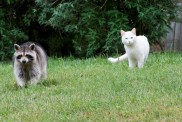Manx cats are recognizable by their most striking feature -no tail or a very short tail. Some have a small stub, while others have no tail at all. This distinctive taillessness or “rumpy” feature is the hallmark of the breed. They are believed to have originated on the Isle of Man, a small island located in the Irish Sea.
Manx cats are a distinct and captivating breed known for their taillessness, friendly personalities, and historical significance. They make wonderful companions for families and individuals who appreciate their unique features and loving nature.
When considering a Manx, it’s advisable to prioritize adopting from rescue organizations or shelters to provide a loving home to a cat in need. However, if you decide to purchase, it’s crucial to choose a reputable breeder. Conduct thorough research to ensure that the breeder follows ethical practices and prioritizes the well-being of their cats. Reputable Manx breeders prioritize the health and temperament of their cats, conduct necessary health screenings, and provide a nurturing environment for the kitties. This active approach ensures that you bring home a healthy and happy kitty while discouraging unethical breeding practices.
Quick Facts
- Origin: Isle of Man
- Size: Medium size, with males typically weighing between 10 to 12 pounds and females around 8 to 10 pounds.
- Lifespan: They have an average lifespan of 12 to 14 years, although some can live longer with proper care.
- Coat: Dense, double coat that can come in various colors and patterns, including solid, tabby, and calico.
- Temperament: Manx cats are known for their friendly, affectionate, and social nature, often forming strong bonds with their human families.
- Exercise Needs: They are moderately active and benefit from interactive play and mental stimulation.
- Training: Manx cats are intelligent and trainable, responding well to positive reinforcement methods.
- Grooming: Their coat requires regular grooming, including brushing to prevent matting and occasional baths as needed.
- Health: Manx cats are generally healthy, but the genetic mutation responsible for their taillessness can lead to spinal and neurological issues. Regular veterinary check-ups are essential to monitor their health.
- Fun facts: The Manx cat is the national cat of the Isle of Man. There are many legends and myths about the origin of the Manx. The most likely explanation is that the breed originated from a natural mutation.
- Schickrys, which is Manx for “certain,” was a Manx cat who was given to Queen Elizabeth, The Queen Mother in 1963. He became the ship’s cat on the royal yacht Britannia.
- A Manx made a featured appearance in the 2012 film “Les Miserables“.
Manx Cat Pictures
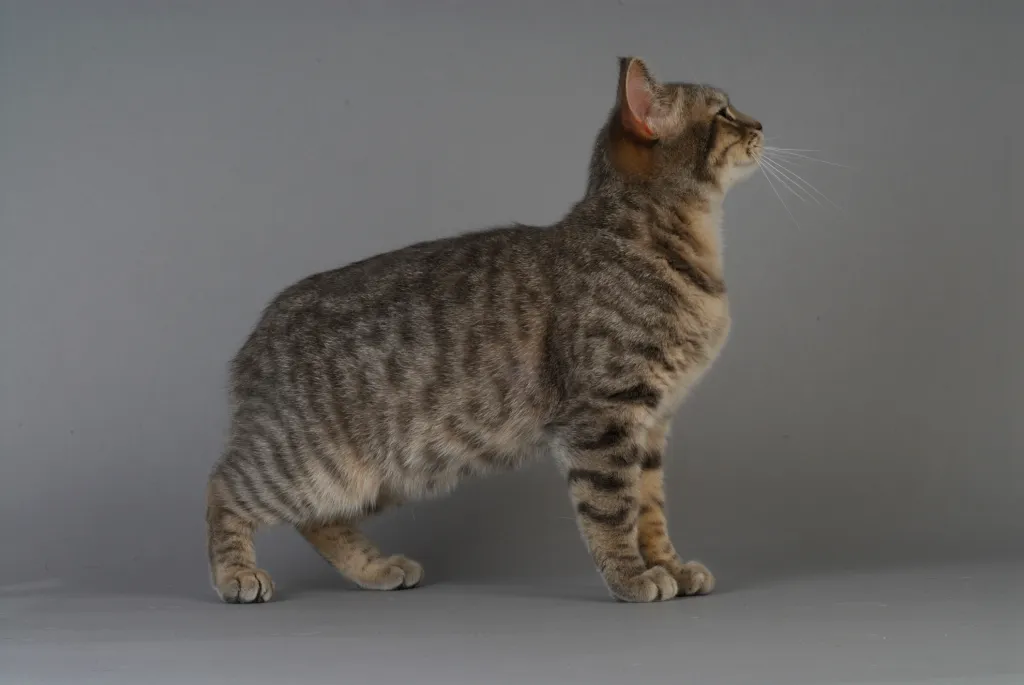
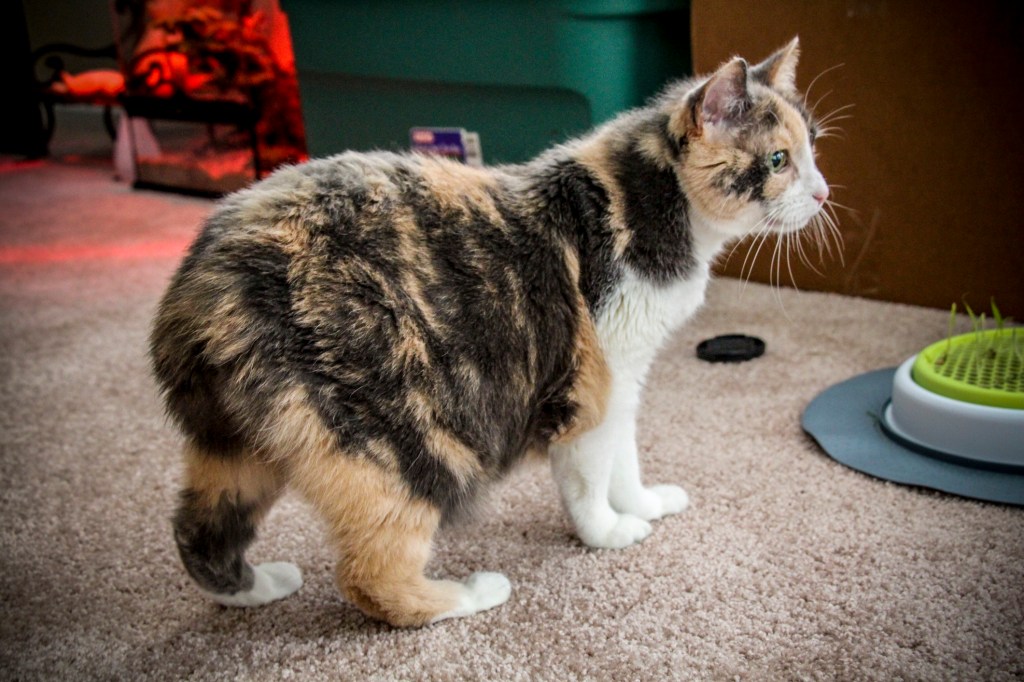
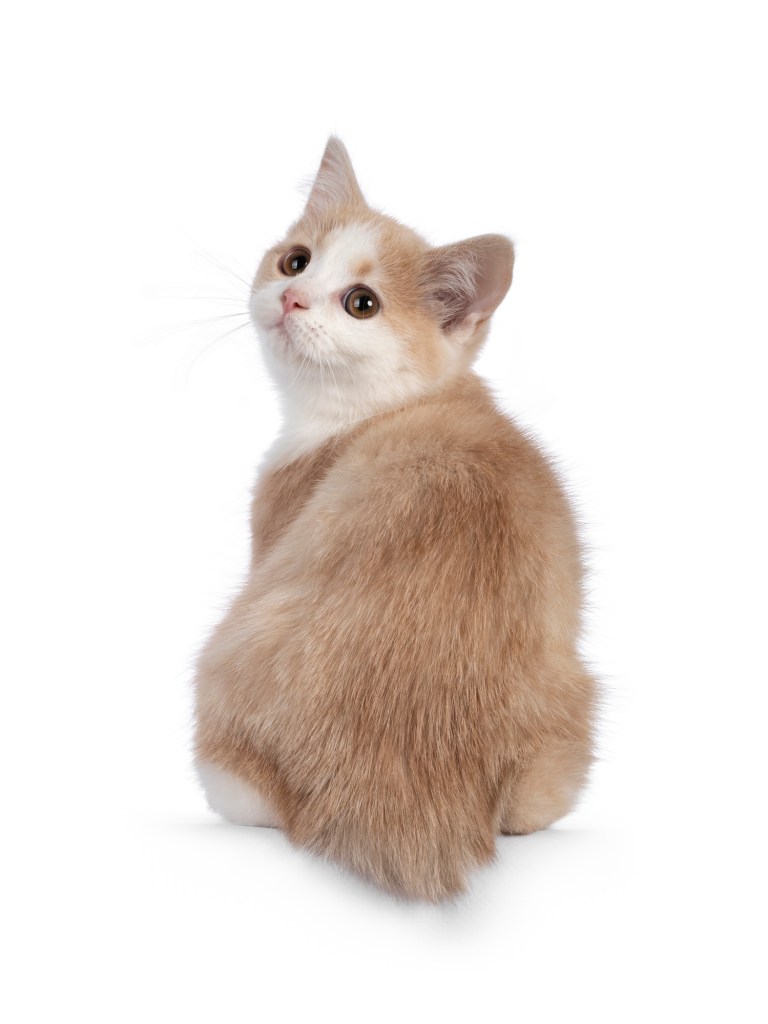
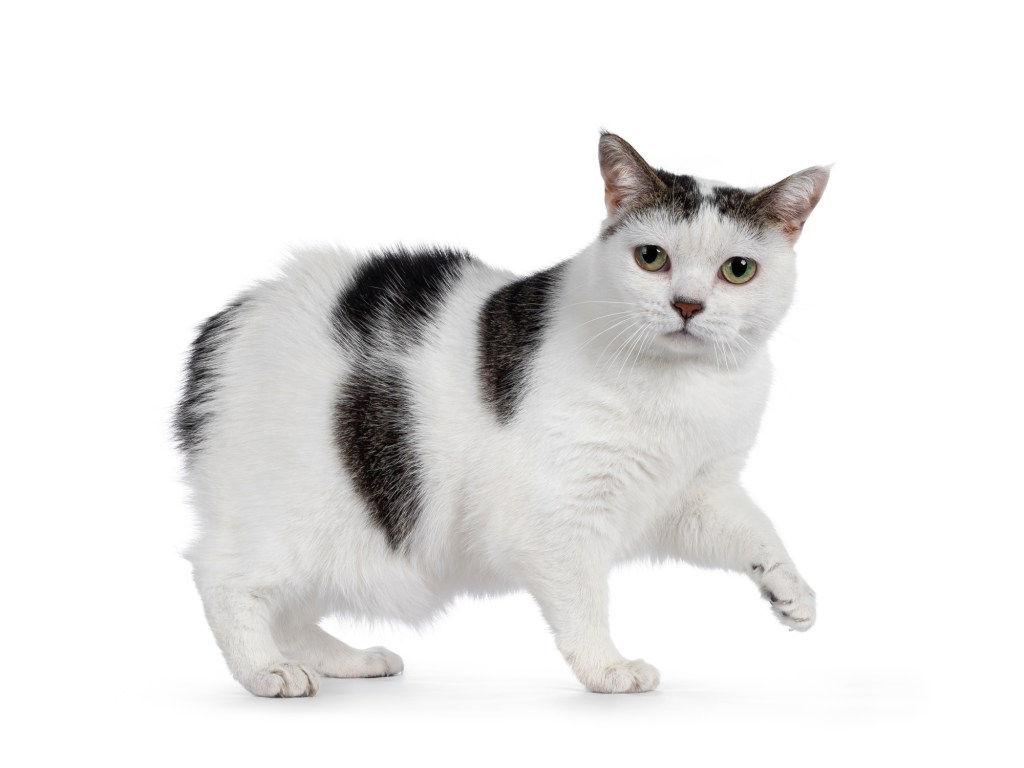
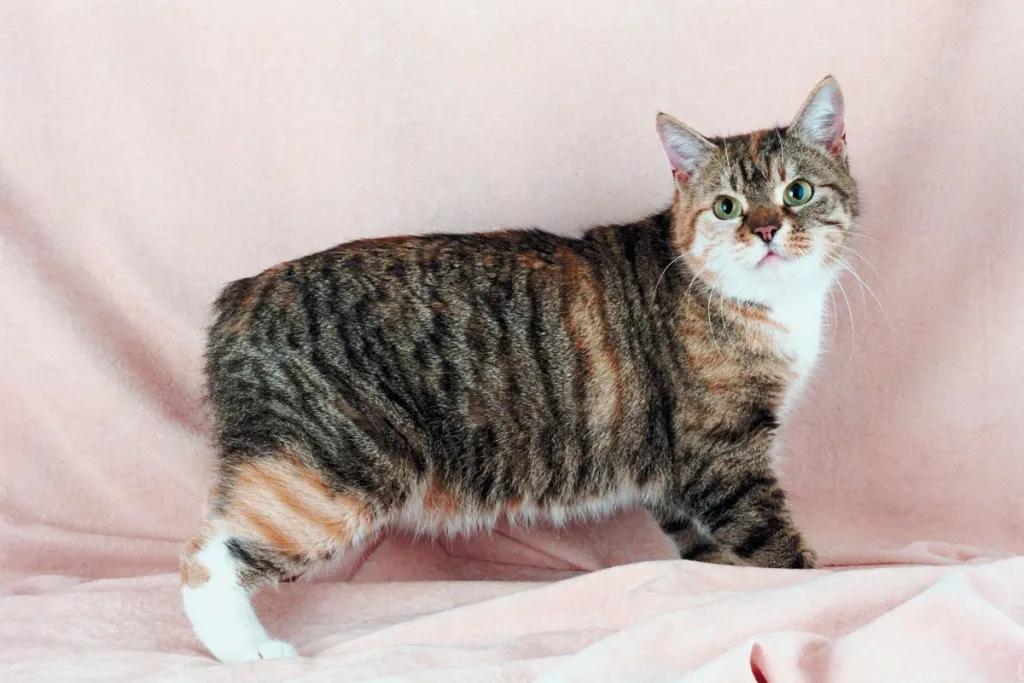
-
Affectionate with Family
Some cat breeds are typically independent and aloof, even if they’ve been raised by the same person since kittenhood; others bond closely to one person and are indifferent to everyone else; and some shower the whole family with affection. Breed isn’t the only factor that goes into affection levels; cats who were raised inside a home with people around feel more comfortable with humans and bond more easily.

See Cats Less Affectionate with Family -
Amount of Shedding
If you’re going to share your home with a cat, you’ll need to deal with some level of cat hair on your clothes and in your house. However, shedding does vary among the breeds. If you’re a neatnik, you’ll need to either pick a low-shedding breed or relax your standards. This furniture cover can make it easier to clean up cat hair and keep it off your sofa!
-
General Health
Due to poor breeding practices, some breeds are prone to certain genetic health problems. This doesn’t mean that every cat of that breed will develop those diseases; it just means that they’re at an increased risk. If you’re looking only for purebred cats or kittens, it’s a good idea to find out which genetic illnesses are common to the breed you’re interested in.
-
Potential for Playfulness
Some cats are perpetual kittens—full of energy and mischief—while others are more serious and sedate. Although a playful kitten sounds endearing, consider how many games of chase the mouse-toy you want to play each day, and whether you have kids or other animals who can stand in as playmates. A classic wand cat toy like this one is perfect for playful felines!
-
Tendency to Vocalize
Some breeds sound off more often than others with meows, yowls, and chattering. When choosing a breed, think about how the cat vocalizes and how often. If constant “conversation” drives you crazy, consider a kitty less likely to chat.
-
Kid-Friendly
Being tolerant of children, sturdy enough to handle the heavy-handed pets and hugs they can dish out, and having a nonchalant attitude toward running, screaming youngsters are all traits that make a kid-friendly cat. Our ratings are generalizations, and they’re not a guarantee of how any breed or individual cat will behave; cats from any breed can be good with children based on their past experiences and personality.
-
Friendly Toward Strangers
Stranger-friendly cats will greet guests with a curious glance or a playful approach; others are shy or indifferent, perhaps even hiding under furniture or skedaddling to another room. However, no matter what the breed, a cat who was exposed to lots of different types, ages, sizes, and shapes of people as a kitten will respond better to strangers as an adult.
-
Easy to Groom
Some breeds require very little in the way of grooming; others require regular brushing to stay clean and healthy. Consider whether you have the time and patience for a cat who needs daily brushing. You should definitely pick up this awesome de-shedding tool for cats of any hair length!
-
Intelligence
Some cat breeds are reputed to be smarter than others. But all cats, if deprived the mental stimulation they need, will make their own busy work. Interactive cat toys are a good way to give a cat a brain workout and keep them out of mischief. This scratcher cat toy can keep your smart kitty busy even when you’re not home!
-
Pet Friendly
Friendliness toward other household animals and friendliness toward humans are two completely different things. Some cats are more likely than others to be accepting of other pets in the home.
Manx History
Is it really a cat if it doesn’t have a tail? It is if it’s a Manx. There are lots of cats with short tails or no tails, but the Manx (and his sister breed the longhaired Cymric) is the only one specifically bred to be tail-free. Sometimes jokingly said to be the offspring of a cat and a rabbit (however cute the idea, a “cabbit” is biologically impossible), the tailless Manx is the result of a genetic mutation that was then intensified by the cats’ remote location on the Isle of Man, off the coast of Britain.
The cats are thought to date to 1750 or later, but whether a tailless cat was born there or arrived on a ship and then spread its genes throughout the island cat population is unknown. The island became known for tailless cats, and that is how the breed got its name of Manx. The Manx is recognized by the Cat Fanciers Association, The International Cat Association, and other cat registries.
Manx Size
This is a medium-size cat who weighs 8 to 12 pounds and feels surprisingly heavy when lifted. The Manx matures slowly and may not reach his full size until he is five years old.
Manx Personality
The Manx began life as a mouser, and he retains his fine hunting skills and alert nature. With a Manx around the house, you don’t need a watchdog; you’ve got a “watchcat” who reacts rapidly and will growl threateningly or maybe even go on the attack at the sight or sound of anything out of the ordinary. If he sees that you aren’t alarmed, he’ll settle back down.
When he’s not protecting his family and property from mice, stray dogs, or other threats, however, the Manx is a mellow fellow: an even-tempered and affectionate cat who enjoys serene surroundings. That’s not to say he is inactive. This is a happy, playful cat who likes to follow his favorite person through the house and assist with whatever he or she is doing. When you are ready to relax, though, the Manx will be in your lap, ready for a comfy nap. If no lap is available, he’ll curl up on the nearest available spot that allows him to keep an eye on you.
He “speaks” in a quiet trill and will carry on a conversation if you talk to him. The Manx has an adaptable nature if he is exposed to activity and other people as a young kitten. He will enjoy meeting new people, greeting them with a gentle head butt or cheek rub, and can adapt to a new home or family if such an upheaval in his life is necessary.
This is a smart cat who can learn tricks, including fetch and come, and is willing to walk on leash if taught early. He often likes to ride in the car, making him a great companion on long-distance trips. It’s not unusual for the Manx to enjoy playing in water—he is an island cat, after all—and you may find him turning on faucets or “fishing” in a fountain. He is also good at learning how to open doors, so be sure anything you don’t want him to have is under lock and key.
Unlike most cats, the Manx is willing to accept boundaries and will usually respect your wishes if you tell him no when he jumps on the counter or scratches on your sofa. Just be sure you give him an acceptable alternative as thanks for his nice behavior. The Manx is highly people-oriented. Choose him only if you can give him plenty of time and attention daily.
Manx Health
Both pedigreed cats and mixed-breed cats have varying incidences of health problems that may be genetic in nature. Manx are generally healthy, but the following diseases have been seen in the breed:
- Arthritis: Arthritis in cats with partial tails, also known as Manx syndrome or Manx cat arthritis, can be a challenging condition that affects the mobility and comfort of these unique felines. Manx cats are known for their genetic mutation that leads to the absence of a full tail, and sometimes this mutation can be associated with other health issues, including arthritis.
- Corneal Dystrophy: Cloudiness that begins to develop when a kitten is approximately 4 months old
- Manx Syndrome: This is a collection of birth defects that may include a spine that is too short, urinary tract defects, and problems with the bowels and digestion. The condition affects approximately 20 percent of Manx cats, most often rumpies, and usually shows up by the time a kitten is 4 months old, a good reason to wait until that age before bringing a Manx kitten home.
Manx Care
The soft, short coat of the Manx is easily cared for with weekly brushing or combing to remove dead hair and distribute skin oil. Check the rear end closely to make sure feces aren’t clinging to the fur surrounding the anus, and clean it if necessary to prevent the cat from smearing poop on carpets or furniture.
Brush the teeth to prevent periodontal disease. Daily dental hygiene is best, but weekly brushing is better than nothing. Wipe the corners of the eyes with a soft, damp cloth to remove any discharge. Use a separate area of the cloth for each eye so you don’t run the risk of spreading any infection.
Check the ears weekly. If they look dirty, wipe them out with a cotton ball or soft damp cloth moistened with a 50-50 mixture of cider vinegar and warm water. Avoid using cotton swabs, which can damage the interior of the ear.
Keep the litter box spotlessly clean. Like all cats, Manx are very particular about bathroom hygiene. It’s a good idea to keep a Manx as an indoor-only cat to protect him from diseases spread by other cats, attacks by dogs or coyotes, and the other dangers that face cats who go outdoors, such as being hit by a car. Manx who go outdoors also run the risk of being stolen by someone who would like to have such a beautiful cat without paying for it.
Manx Coat Color And Grooming
The Manx is known for his lack of a tail, but not every Manx is completely tailless. Some, known as “longies,” have a normal-length tail, and others, known as “stumpies,” have short tails. A Manx with no tail is called a “rumpy” and one with just a rise of bone at the end of the spine is known as a “riser.” You will see only rumpies and risers in the show ring, but cats with tails can be used in Manx breeding programs.
A Manx has other distinguishing characteristics as well, including a round head with large round eyes, a stout, powerful body with a broad chest, short back and broad, round rear end, short front legs and long hind legs with muscular thighs. The long rear legs give him the appearance of a rabbit and may be the source of the “cabbit” myth.
The Manx has two different coat lengths: a short double coat or a longhaired double coat. The longhaired Manx is called a Cymric in some cat registries, but the Cat Fanciers Association simply considers the longhair a variety of Manx. In both lengths, the coat comes in many different colors, including various solids, tabbies, tortoiseshells and calicos. Chocolate and lavender colors and the pointed Himalayan pattern are not permitted. This is a medium-size cat who weighs 8 to 12 pounds and feels surprisingly heavy when lifted. The Manx matures slowly and may not reach his full size until he is five years old.
Children And Other Pets
If he is introduced to them in kittenhood, the active and social Manx is a perfect choice for families with children and cat-friendly dogs. He will play fetch as well as any retriever, learns tricks easily and loves the attention he receives from children who treat him politely and with respect. He lives peacefully with cats and dogs who respect his authority and can learn to leave birds and fish alone. An adult Manx may not appreciate children as readily, especially if he is used to a quiet household. Always introduce pets slowly and in controlled circumstances to ensure that they learn to get along together.



